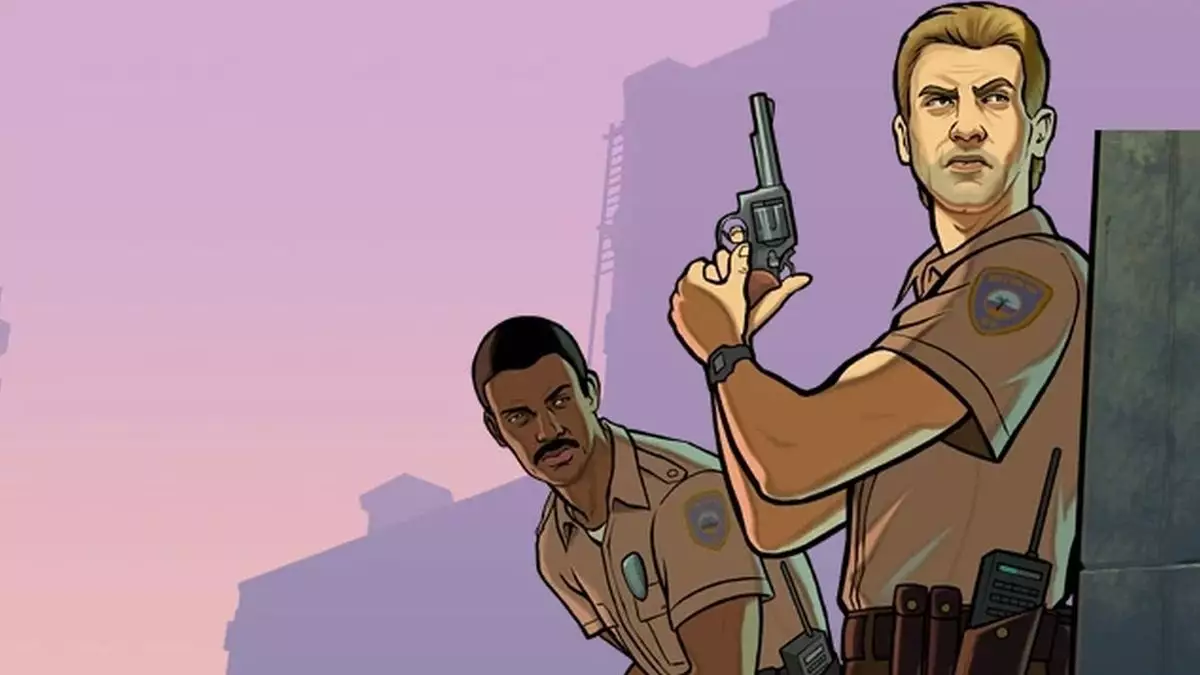Speedrunning is a niche but captivating aspect of gaming that pushes players to complete games in the shortest time possible, often utilizing advanced techniques and strategies to shave seconds off the clock. However, as any speedrunner will attest, the journey to set a new world record is fraught with unpredictable challenges. A recent incident involving speedrunner Joshimuz attempting to set a world record in “GTA: Vice City” highlighted the frustrations and unforeseen hurdles that come with high-stakes gameplay.
During a tense segment of his “No Major Glitches” run, Joshimuz faced a setback that few could anticipate. At the 100-minute mark, while engaged in the Cherry Popper ice cream factory missions, he found himself on the wrong side of the law due to a minor traffic mishap. Under normal circumstances, this might not pose much of a threat, especially given his skill set. Any seasoned speedrunner knows how to navigate these obstacles with finesse, avoiding the heightened attention from law enforcement. However, in an unexpected turn of events, a police officer, seemingly faster than a speeding bullet, warped to Joshimuz’s location, leading to his arrest. This incident not only derailed his run but also showcased the unpredictable nature of game mechanics that can impede progress.
Fortunately, the gaming community did not let the incident fade into obscurity. Rockstar developer Obbe Vermeij chimed in, shedding light on the bizarre behavior exhibited by the game’s AI. His explanation revealed that a bug related to the “getting into vehicles” AI could lead to the officers acting irrationally. In short, the cop had been programmed to approach the car but encountered a glitch that triggered a “panic code,” resulting in his instant teleportation to the vehicle. This revelation served to highlight the intricacies of game design, where elements that should seem straightforward can have multifaceted implications due to the underlying code.
Vermeij’s commentary also illustrated that he had no part in the creation of this aspect of the game. This acknowledgment is critical for fans who often view developers as responsible for every minute detail. It reminds us that video games are complex systems created by teams of individuals, where bugs and glitches can originate from various areas of the code and design process.
The incident serves as a reminder of the rich history of gaming bugs, some of which have become legendary in their own right. From the infamous plane crashes in “GTA: San Andreas,” which Vermeij referred to as an embarrassing hurdle, to the various ludicrous glitches encountered in earlier titles, developers and players alike have shared in the challenges posed by these erratic elements. Oftentimes, glitches can lead to humorous moments or even enhanced gameplay experiences, but they can also threaten painstakingly executed speedruns, just as Joshimuz discovered.
The complexities of game mechanics—such as character navigation and environmental interaction—are not merely confined to glitches but can also serve to enhance the immersive experience provided by the game. Developers like Vermeij emphasize the effort that goes into programming these interactions, revealing the balancing act required to create a rich narrative while ensuring smooth gameplay.
Joshimuz’s misfortune elicited a wide array of reactions within the gaming community. A mix of empathy, humor, and a sense of camaraderie emerged as fellow speedrunners and fans rallied around him. Such instances often serve as a reminder that speedrunning, while competitive, also fosters a community atmosphere where setbacks are shared and discussed, fostering inclusivity and understanding. It reflects the highs and lows inherent in gaming, creating bonds among players who appreciate the shared journey of pursuit, frustration, and occasionally, comedy.
The incident involving Joshimuz in “GTA: Vice City” serves as a vivid illustration of the unpredictable nature of speedrunning and game design. While speedrunners strive for perfection, external factors—like errant police officers and game glitches—can undermine their efforts. Such moments not only challenge the individual player but also invite broader discussions around game mechanics, community support, and the intricate world of video game development.


Leave a Reply